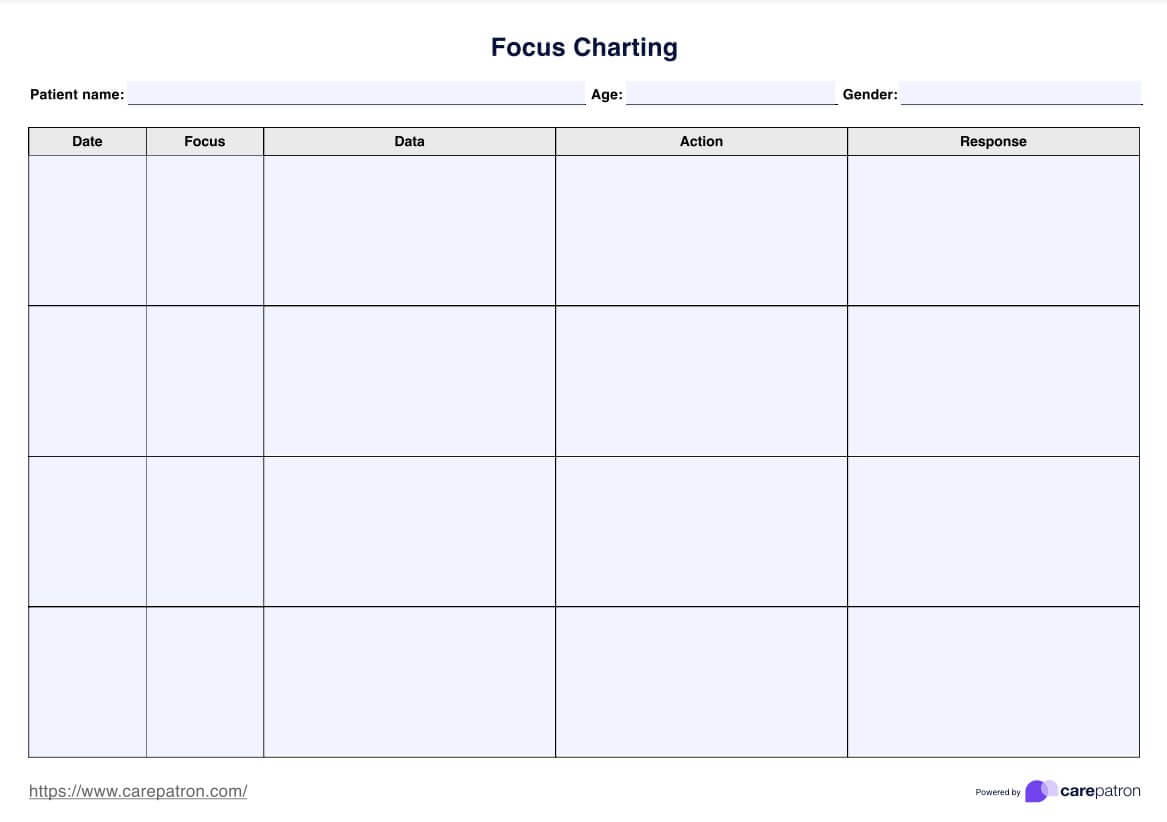Focus Charting is primarily used by healthcare professionals, such as nurses, physicians, therapists, and other clinicians. It is a documentation method that helps them record patient care information, track progress, and communicate effectively with other team members.

Focus Charting
Adopt Focus Charting for efficient patient care documentation, leveraging the F-DAR format to monitor progress and improve team communication.
Focus Charting Template
Commonly asked questions
Focus Charting is used throughout the patient care process, from admission to discharge. It is advantageous during patient assessments, care planning, intervention implementation, and evaluation of outcomes. Healthcare professionals use this F-DAR progress notes format to document changes in a patient's condition, treatment plans, and response to interventions.
Focus Charting is followed by the F-DAR format, which consists of four components: focus, data, action, and response. Healthcare professionals use the F-DAR format to create clear, concise, and organized patient care records, enabling effective communication and collaboration among the care team.
EHR and practice management software
Get started for free
*No credit card required
Free
$0/usd
Unlimited clients
Telehealth
1GB of storage
Client portal text
Automated billing and online payments











